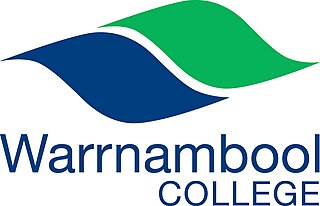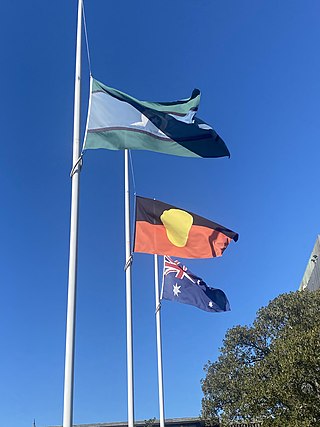
Joan Elizabeth Kirner was an Australian politician who was the 42nd Premier of Victoria, serving from 1990 to 1992. A Labor Party member of the Parliament of Victoria from 1982 to 1994, she was a member of the Legislative Council before later winning a seat in the Legislative Assembly. Kirner was a minister and briefly deputy premier in the government of John Cain Jr., and succeeded him as premier following his resignation. She was Australia's third female head of government and second female premier, Victoria's first, and held the position until her party was defeated in a landslide at the 1992 state election.

Soil salinity and dryland salinity are two problems degrading the environment of Australia. Salinity is a concern in most states, but especially in the south-west of Western Australia.

Conservation Volunteers Australia is an Australian not-for-profit conservation organisation that attracts and co-ordinates volunteers for environmental restoration projects.

The Australian Conservation Foundation (ACF) is Australia's national environmental organisation, launched in 1965 in response to a proposal by the World Wide Fund for Nature for a more co-ordinated approach to sustainability.
The following lists events that happened during 1990 in Australia.
The Natural Heritage Trust (NHT), or National Heritage Trust Account was set up in 1997 by means of the Natural Heritage Trust of Australia Act 1997, with the main objective of conserving the "natural capital infrastructure" of Australia. Money from the NHT Account must be spent on the environment, sustainable agriculture and natural resources management (NRM). Since its establishment, a considerable number of community groups and organisations have received funding for environmental and natural resource management projects, delivered via a number of different initiatives since 1997. As of June 2020, the NHT account is funding a program known as Phase Two of the National Landcare Program. The original National Landcare Program was launched in 1992, but in 2014 merged with the Caring for our Country program.
Richard Andrew Farley was an Australian journalist, politician, land rights and civil rights activist for the rights of Indigenous Australians. He emerged in the public's eye as a prominent member of the Council for Aboriginal Reconciliation, an organisation that looked to establish healthy, multicultural relationships between Aboriginal and Torres Strait Islander peoples and non-Indigenous Australians.

Bush Heritage Australia is a non-profit organisation with headquarters in Melbourne, Australia, that operates throughout Australia. It was previously known as the Australian Bush Heritage Fund. Its vision is: Healthy Country, Protected Forever.

An Indigenous Protected Area (IPA) is a class of protected area used in Australia; each is formed by voluntary agreement with Indigenous Australians, and declared by Aboriginal Australians and Torres Strait Islander representative organisations. Each is formally recognised by the Australian Government as being part of its National Reserve System. The areas may comprise land and sea, and are managed by Indigenous groups for the conservation of biodiversity. Managing IPAs also helps to protect the cultural values of their country for future generations, and has benefits for Indigenous health, education, economic and social cohesion.

In New Zealand, agriculture is the largest sector of the tradable economy. The country exported NZ$46.4 billion worth of agricultural products in the 12 months to June 2019, 79.6% of the country's total exported goods. The agriculture, forestry and fisheries sector directly contributed $12.653 billion of the national GDP in the 12 months to September 2020, and employed 143,000 people, 5.9% of New Zealand's workforce, as of the 2018 census.
The Conservation Council of South Australia, also known as Conservation SA and Conservation Council SA, is an environmental organisation serving as a peak body, representing over 50 member groups, representing over 90,000 individual members, in the state of South Australia.

Beginning as a conservation movement, the environmental movement in Australia was the first in the world to become a political movement. Australia is home to United Tasmania Group, the world's first green party.

Warrnambool College is a government high school in the regional town of Warrnambool in south-west Victoria, Australia.

Penelope Mitchell is an Australian actress, best known for playing the roles of Letha Godfrey in the American horror television series Hemlock Grove, and Liv Parker in The Vampire Diaries.
The Victorian Farmers Federation (VFF) is an Australian non-profit membership based advocacy and lobby group that represents farmers in Victoria. The organisation represents its members in lobbying state and federal government on policy matters that affect farmers and regional communities. The VFF is a member organisation of the national farm lobby group the National Farmers Federation.
Phillip Toyne AO was an Australian environmental and indigenous rights activist, lawyer, and founder of Landcare Australia. He was the head of the Australian Conservation Foundation from 1986 to 1992. He negotiated the Pitjantjatjara Land Rights Act and the successful native title claim of the traditional owners of Uluru in 1983.
Heather Mary Mitchell, neeHutchieson was an Australian farmer, community leader and conservationist. From 1986 to 1989, she served as the first female president of the Victorian Farmers Federation, and played a central role in the establishment of Landcare.

Reconciliation in Australia is a process which officially began in 1991, focused on the improvement of relations between the Aboriginal and Torres Strait Islander peoples of Australia and the rest of the population. The Council for Aboriginal Reconciliation (CAR), created by the government for a term of ten years, laid the foundations for the process, and created the peak body for implementation of reconciliation as a government policy, Reconciliation Australia, in 2001.
Bradley Paul FarmerAM is an Australian advocate, author and conservationist. He was awarded a Member of the Order of Australia on the 2019 Queens Birthday Honours List for a lifetime of voluntary service towards coasts, conservation and communities. His first environmental campaign, aged 12, was on the Gold Coast where he grew up. He continues to be an adviser of coastal conservancy in Australia and elsewhere.











